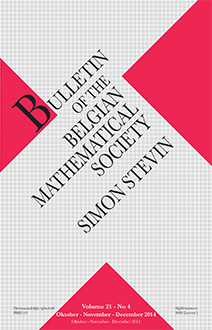Abstract
The observation and the discussion of the physical reality of phenomena, leads to bring out concepts which have to be described in a non ambiguous mathematical language. Concerning Dirac's calculus we shall introduce, besides the usual definitions for the concepts of point, number, function etc ... , additional concepts for the physical point, the physical equalities, physical infinities and infinitesimals ... etc ... In particular we introduce a new equality $=^{D}$, called Dirac-equality, which differs as well from the classical equality as from the weak equalities introduced in various theories of generalized functions. All these definitions are based on a definition in the language of Relative Set Theory of the metaconcepts of improperness used by P.A.M. Dirac in [Di], when he claimed " \textit{Strictly of course, $\delta(x)$ is not a proper function of $x$, ... , ... $\delta'(x), \delta''(x)$.... are even more discontinuous and less proper than $\delta(x)$ itself}". We defined this way a concept of observed derivative which extends the usual one to a large class of \textit{discontinuous} possibly non-standard functions. All the multiplications of improper or very improper functions, including the delta-functions and their observed derivatives, are obviously allowed. Now the problem of the multiplication is replaced by another one: under which conditions is the Dirac-equality of two functions preserved by a multiplication term by term?
Citation
Yves Péraire. "A mathematical framework for Dirac's calculus." Bull. Belg. Math. Soc. Simon Stevin 13 (5) 1007 - 1031, January 2007. https://doi.org/10.36045/bbms/1170347823
Information





